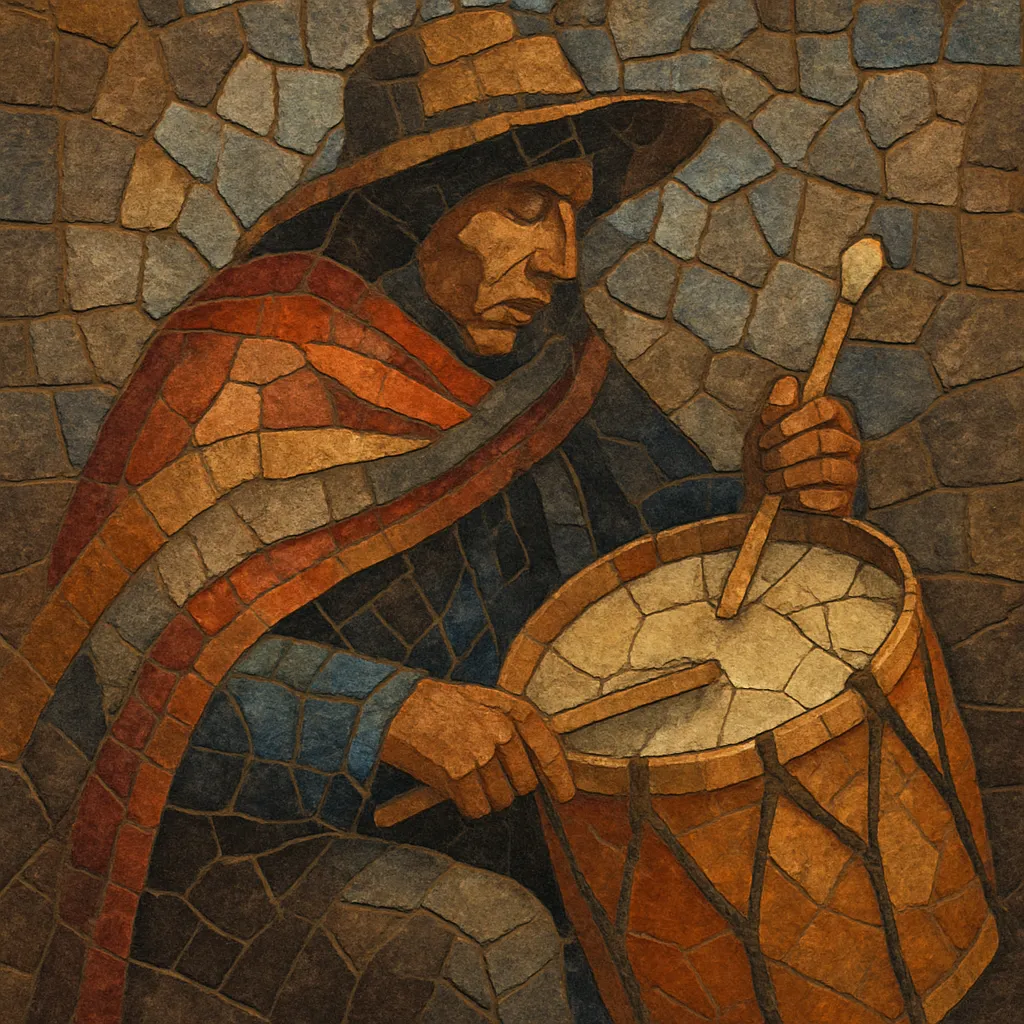Baguala is a traditional highland song form from the Argentine Northwest, especially the provinces of Salta, Jujuy, Catamarca, and Tucumán.
It is most often sung a cappella or with the sparse accompaniment of a small hand drum known as the caja coplera (or caja chayera), producing a stark, resonant pulse that supports free, melismatic vocal lines.
Melodically, baguala tends toward modal scales (often Aeolian or Dorian) and pentatonic inflections, with wide, emotional glides that can include microtonal bends and shouted, open-throated cries. Rhythm is flexible and rubato, moving between a free recitative feel and slow, cyclical drum strokes rather than strict metrical regularity. Texts are typically short strophic verses—frequently octosyllabic quatrains with assonant rhyme—whose themes evoke mountain landscapes, solitude, love, memory, and the ritual time of carnival.
As both a living practice and a symbol of Andean-Argentine identity, the baguala is performed in open-air settings, communal gatherings, and ceremonies, where the human voice projects across valleys and puna plateaus, merging personal lament with collective memory.
Baguala is rooted in pre-colonial Andean vocal traditions of the Argentine Northwest, where Indigenous peoples such as the Diaguita-Calchaquí cultivated call-like songs designed to carry over long distances. The practice emphasizes a solo voice and a hand drum (caja), reflecting a sound world shaped by mountainous acoustics and communal ritual.
From the 16th century onward, Spanish colonial presence introduced poetic forms like the copla. While the musical core of baguala remained Indigenous in ethos and vocal technique, the textual organization of verses increasingly reflected Spanish copla metrics and rhyme habits. This resulted in a hybrid but still unmistakably Andean-Argentine vocal genre.
In the mid–20th century, collectors and performers—most notably Leda Valladares—traveled through the Northwest recording, transcribing, and presenting bagualas on stage and record. Parallelly, the Argentine folk boom and later nueva canción currents embraced Andean timbres and themes, bringing baguala-inflected repertoire to urban audiences while preserving its austerity and emotive intensity.
Today, baguala remains a living practice among copleras and copleros in the Northwest and appears in concert settings and recordings by folkloric and singer–songwriter artists. Modern performances may incorporate charango, guitar, or subtle studio ambience, but the core identity persists: a voice, a caja, a modal lament, and verses that speak to land, memory, and communal ritual time.


